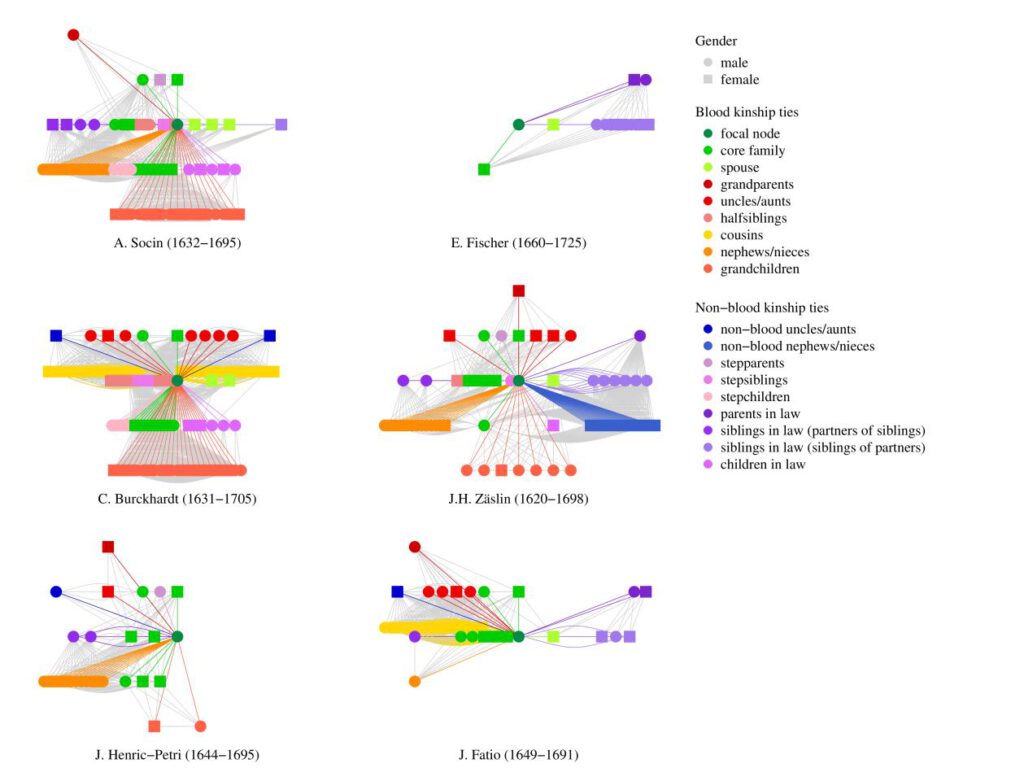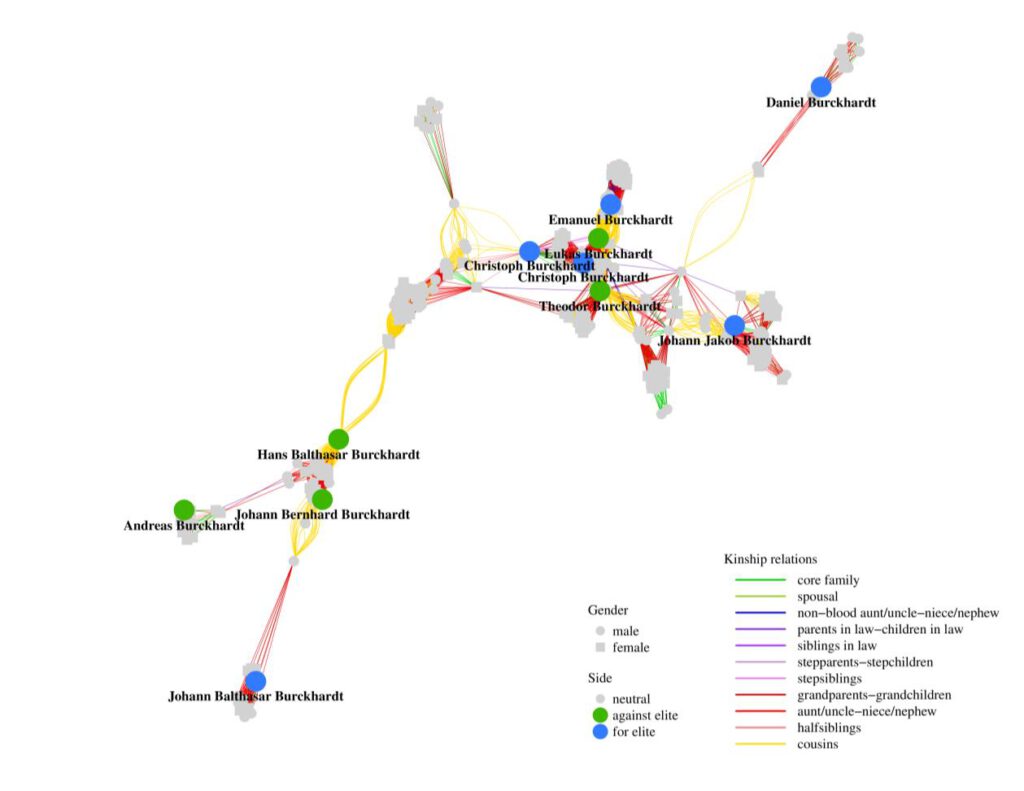Niccolò Armandola and Malte Doehne
Time and Place: Friday, 02.07., 09:20–09:40, Room 2
Session: Kinship and Geneaology
Context: A revolution attempt against a nepotistic government dominated by a small number of influential families took place in 1691 in the city of Basel, Switzerland. The coup failed after a year of political turmoil, known as 1691er Wesen (Ochs 1786; Schweizer 1931). The event was well documented by both contemporary authors and Swiss historians. Using a comprehensive genealogical database, we analyse the role of multiplex kinship ties in mobilizing collective action.
Objective: The revolution attempt was neither a precursor of class movements nor a conflict between guilds, as the rebels were recruited from all the guilds of the town. The historical sources refer to the 1691er Wesen as the escalation of family rivalries that had been growing during the previous decades, after the younger generations of two large migration waves overtook important political charges from the old citizenship. In this study, we pursue the intuition that the revolution pitted two loose federations of families against one another. Our aim is to understand how different kinship relations between individual and their families connected and mobilized actors on behalf of either federation. Our work is inspired by Padgett and Ansell (1993), who have drawn attention to the importance of kinship relations in European history. In the Renaissance, for example, the Medici family rose to power in Florence by strategically marrying into other powerful families (Padgett and Ansell 1993). We aim to demonstrate that strategically forged kinship ties predicted the sides individuals took in the subsequent uprising. Our general claim is that family ties create alliances among families and among individuals and thereby mobilize collective action. We analyze the extent to which this claim holds for different types of social relations.
Design: Using genealogical data, we define fifteen kinship relations that extend beyond and connect between core families (spouses and their children). For example, we define the relation between uncles and nephews as ties connecting males to their parents’ brothers, or a persons’ parents’ parents as their grandparents. By further distinguishing patrilineal from matrilineal lines, a complex web of distinct kinship relations emerges. Figure 1 shows the ego-graphs of six individuals who played an important role in the 1691er Wesen. Aggregated across individual families, this yields a multiplex network in which rebels, neutral individuals and pro-elite are embedded and interconnected through kinship ties.
Setting/Data: We combine hand-coded data on the actors who were involved in the revolution attempt of 1691 with a comprehensive genealogical dataset that comprises more then 8000 individuals, or an estimated 80% of all living Baslerans of that period.
Interventions: We analyze how the composition of local kinship configurations affected mobilization status. For example, we quantify the likelihood of an individual being a rebel as opposed to pro-elite given their uncle’s or grandfather’s status. This allows us to quantify the extent to which kinship ties differ in terms of their influence on individual decision making. Granovetter (1973) focused on the importance of weak ties for information transmission and diffusion . Our design allows us to test whether weak and indirect kinship ties diffuse powerful ideas, such as rise against a powerful elite.
Main Outcome Measures: For each individual who had an active part in the revolution (actor) we measure the activity status of their proximate kin. This task proves challenging, since some individuals had a very dense family network and were thus connected with both partiesinvolved in the conflict. Also, defining new edges adds important information to the data, but it also significantly increases the network’s complexity. Figure 2 shows an example of such complexity by presenting a fraction of the Burckhardt family, one of the most important families of the time. Rebels and elite nodes are present in both strands of the family, while the nodes also have kinship ties with other actors from other families that are not represented in this figure.
Results: Our preliminary findings suggest that kinship ties were crucial for both the rebels’ and the elite’s networks. While for the elite kinship ties were a way to maintain the status of their family, for the rebels it offered the opportunity to organize collective action.
Literature
Granovetter, Mark S. 1973. „The strength of weak ties.“ American journal of sociology 78 (6): 1360- 1380.
Ochs, Peter. 1786. Geschichte der Stadt und Landschaft Basel.Geschichte von Basel. Berlin: Georg Jakob Decker.
Padgett, John F, and Christopher K Ansell. 1993. „Robust Action and the Rise of the Medici, 1400- 1434.“ American journal of sociology 98 (6): 1259-1319.
Schweizer, Eduard. 1931. Eine Revolution im alten Basel: Das Einundneunziger Wesen. Basel: Helbing & Lichtenhahn.

